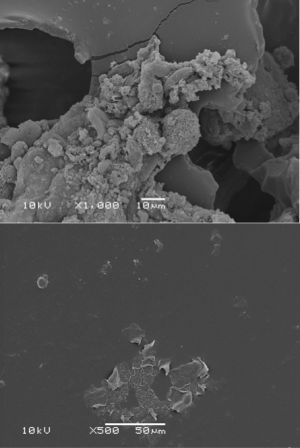Textured breast implants pose greater risk of infection than smooth breast implants

(Medical Xpress)—New research shows that breast implants with a textured surface have a significantly higher chance of developing bacterial coating (biofilm) in comparison with smooth implants, in turn heightening the risk of infection, and implant discomfort or failure.
Lead by Associate Professor Anand Deva, researchers from the Australian School of Advanced Medicine at Macquarie University conducted testing to confirm the theory that implants with a textured or rougher surface inadvertently present more suitable conditions for bacteria to grow on.
At the 24-hour point of in vitro testing, analysis showed that textured implants had 72 times the number of bacteria attached to their surface as compared with the smooth implants.
"Our previous research has shown that the majority of contracture complications are due to a low-grade infection (biofilm) around the implants, most likely caused at the time of insertion," said Professor Deva.
"Biofilm on the implant surface is increasingly understood to be responsible for initiating inflammation, which leads to capsular contracture in the majority of cases."
Contracture is the most common complication following breast implant insertion and causes progressive hardening of the tissue around the implant. Contracture results in visible deformity and pain. It affects anywhere from 10-50% of women with implants used both for cosmetic and reconstructive purposes.
"Textured implants were introduced because the rougher surface provides better 'grip' for the implants to adhere to the surrounding tissue. Unfortunately this benefit does not come without a catch," said Professor Deva.
"Given that breast implants are the most common procedure performed in cosmetic surgery, we wanted to ensure that clinicians and patients are aware of the pros and cons of the different implant varieties.
"Surgeons using textured implants have to be especially careful not to introduce bacterial contamination at the time of implant insertion."
Professor Deva and his team have had published a 14-step guide to reduce the risk of breast implant infection (excerpt of "The Role of Bacterial Biofilms in Device-Associated Infection" Plastic and Reconstructive Surgery, November 2013, page 1323), based on evidence of best practice to educate surgeons on how to reduce the risk of bacterial contamination.
Future research will focus on further defining the host response to chronic infection, and thus increasing the resistance of breast implants to infection. These findings may also be applied to reduce the risk of biofilm infection and failure on other medical implants and devices.
More information: "In vitro and in vivo investigation of the influence of implant surface on the formation of bacterial biofilm in mammary implants." Jacombs A, Tahir S, Hu H, Deva AK, Almatroudi A, Wessels WL, Bradshaw DA, Vickery K. Plast Reconstr Surg. 2014 Apr;133(4):471e-80e. DOI: 10.1097/PRS.0000000000000020.



















